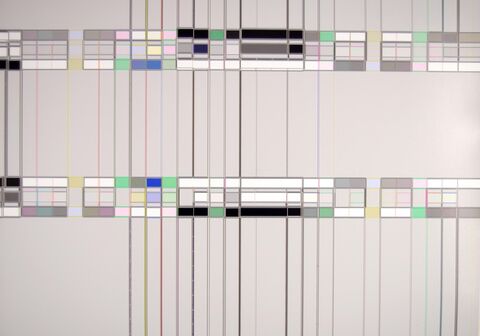Ursula Schoepper, Berlin & Bonn, Germany
Fine Art Photography, Reduction
Reduction means physical and mathematical processes, networked systems. The Photographic art, or precisely computer- aided photographic art, is a construct; it is an image-like description of networked systems, or arrangements, such as light-material-spirit relations on the one hand, and physical and mathematical processes on the other. The abstraction in my photographic works involves a thematization of the relation between the observed world and the created image. The breaking up of perception routines means destruction, deconstruction, and in the next stage innovation through creative networking. The photographic view, the “scanning”, is necessary for an expansive artistic, mathematical arrangement. The computer-aided, abstract work of photographic art is finally a metamorphosis, referencing appearance and being, and is thus virtual, or always present in its potential.
A photograph is first and foremost an image created with light. Digitally stored and computer-aided photography goes beyond this, using mathematical and physical structures as its foundation. This means more potential, as the photographic artist can reformulate the photographic image using a mathematical language, that is she can regenerate the image. This process creates virtual images, as the potential is always present that sometimes could not be perceived beforehand.
With computer-aided artistic photography as a new articulation of an artistic process, the surface properties of the thing being depicted, its material, light-shadow relations, the perspective, the scanning as carried out by the photographic artist, that is his or her choice of image details, play a decisive role as the genetic prerequisite of an artistic idea. Experimental, computer-aided photographic art means both setting free and encryption. This orientation within photographic art frees the artist of the obligation to reproduce reality. It is a visual sign, a pictograph of freedom, of autonomy. Photographic art is the primary means of expression. As opposed to science, visual art does not negate what has come before, nor is it forced to offer proof of its validity. The autonomy of the image creates the autonomy of the act of seeing. A distinction must be made between seeing something new and being given the potential to see something in a new way, new kinds of open structures, a new form, new contexts and networks. This making visible does not reveal another world; rather it helps create a new orientation in relation to the world.
The valuable otherness of experimental, computer-aided photographic art consists in the transference, the translation by means of the technical, computer-aided medium. Here creating images means an uninterrupted creation of systems by means of transformation. The experimental photographer does not create images, does not produce, he or she visualizes an idea, an imagination. © Ursa Schöpper









